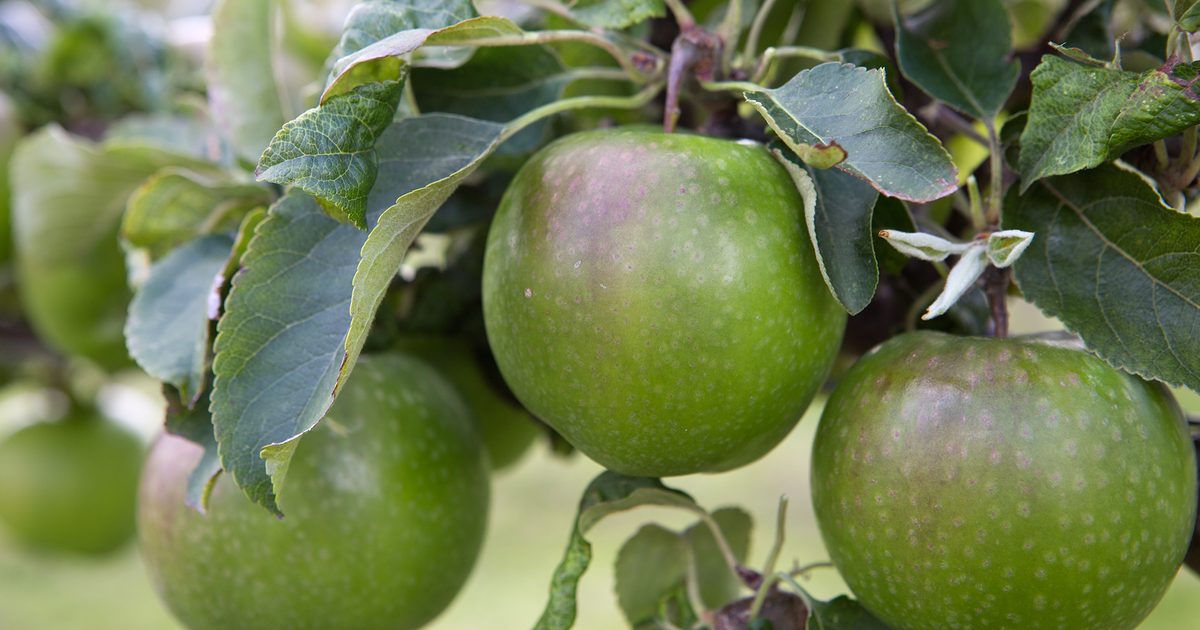[ad_1]
Raymond advises that the vital factor of cooking apples depends upon choosing the proper alternative for a selected dish – you want the appropriate steadiness of acidity and sweetness, and texture is vital too.
Correct proper right here, Raymond shares 10 of his favorite varieties and the easiest way he makes use of them.
‘Adam’s Pearmain’
This outdated dependable, English dessert apple has medium-size, barely russeted fruit. It’s harvested in October and retailers for over three months. It has good illness resistance. ‘I just like the creamy flesh and wealthy nutty, virtually dry flavour,’ says Raymond.
Pollination group: 2
Finest for: purees and tarts
‘Blenheim Orange’
This dual-purpose dessert and cooking alternative will probably be eaten uncooked when youthful or cooked when further mature. Harvest in early October; fruits retailer for 2 or three months. Raymond says: ‘That is considered thought of one in every of my favorite varieties on account of it has a spicy, russet flavour and will very effectively be very versatile – it’s best to make use of it in so many alternative methods.’
Pollination group: 3 (triploid)
Finest for: purees and tarts

‘Bramley’s Seedling’
This cooking apple grows on vigorous, sprawling timber, so it’s best for bigger gardens solely. Harvest in November; fruits retailer for over three months. It has good illness resistance. ‘For me that is too acidic for regular cooking, nonetheless it completely breaks down into the appropriate texture and flavour for purees,’ says Raymond.
Pollination group: 3
Finest for: purees
‘Braeburn’
This dessert apple comes from New Zealand and will go correct proper right into a ‘sulk’ in cool summers, so it needs your sunniest and warmest nook. Compact, it is good for small plots. Harvest in October or November; fruits retailer for 3 months. Raymond says: ‘I similar to the tart, richly apple-y flavour.’
Pollination group: 4 (self fertile)
Finest for: tarte tatin
‘Captain Kidd’
A dessert alternative that’s associated to Cox’s Orange Pippin, with an comparable flavour, nonetheless masses simpler to develop. Harvest in November; fruits retailer for 2 months. ‘Fragrant and crunchy, with creamy-white flesh and an unbelievable flavour,’ is Raymond’s verdict.
Pollination group: 3
Finest for: juicing and tarts
‘Cox’s Orange Pippin’
This apple has a superb flavour nonetheless is usually a little bit of temperamental – it is comparatively disease-prone and dislikes the chilly and moist. Harvest in October; fruits retailer for 3 months. ‘World class!’, says Raymond. ‘This has the right flavour and is the right for savoury dishes due to it is not too candy.’
Pollination group: 3
Finest for: purees, tarts and tarte tatin
‘Granny Smith’
A dessert alternative that needs an extended, scorching summer time season. Harvest in October; fruits shield for 3 months. Raymond says: ‘This has a refreshing acidity, which I like, and it furthermore holds its texture considerably properly when sliced and cooked.’
Pollination group: 3
Finest for: tarte tatin
‘Chivers Delight’
A dessert apple that’s easy to develop and retailers accurately, for as so much as three months. Harvest in October or November. ‘I am keen on the wealthy, honey flavour of this apple, which is analogous to the Cox. And I like the easiest way whereby it ‘fluffs’ when it cooks with out disintegrating.’
Pollination group: 4
Finest for: baking and tarts
‘Egremont Russet’
A small, russet dessert apple with firm flesh. Harvest fruits in October; they are going to retailer for 3 months. ‘This has beautiful layers of richness and acidity. The flavour is nutty and dry., and it turns into deeper when it’s saved.
Pollination group: 2
Finest for: juicing and tarts
‘Lord Lambourne’
A dependable, compact tree, turning out heavy crops of dessert apples, 12 months after 12 months. Harvest fruits in September; they are going to shield for 2 months. ‘I just like the soundness of acidity and sugar, which offers a flowery, fragrant flavour. The flesh is crisp, too.’
Pollination group: 2
Finest for: tarts
Rising for flavour
Raymond’s head gardener, Anne Marie Owens, shares her choices for wonderful apples:
- Selection is essential, so go to an apple day to mannequin as many sorts as potential, and develop solely what you need.
- Go for naturally disease-resistant varieties the place potential, notably throughout the event you yard organically.
- Plant two from the same pollination group, to spice up cropping. Or develop a self-fertile alternative.
- Skinny the fruitlets in July to in any case one or two per cluster, leaving the healthiest – you will get fewer fruits nonetheless they are going to be top quality top quality.
- Keep an home of soil away from weeds and grass spherical your tree, about 1m all via, to cut back opponents and improve progress.
- Feed timber every spring with slow-release fertiliser, resembling pelleted poultry manure.
- Depart late varieties on the tree for so long as potential to mature the flavour.
- Apples are fully ripe after they arrive away with a fragile twist.
[ad_2]